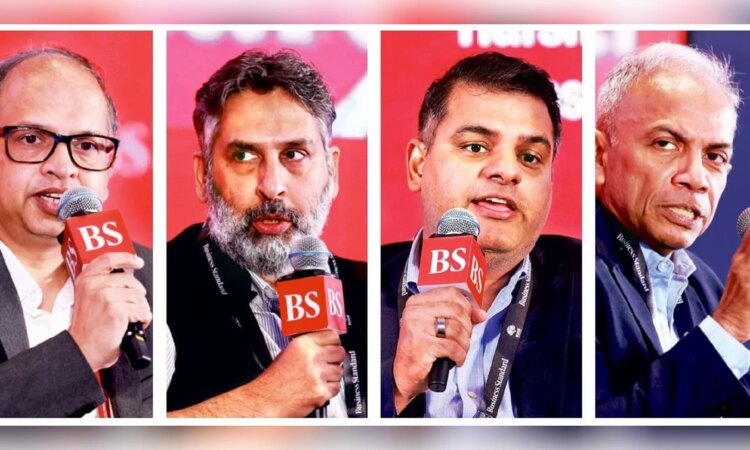
Addressing cross-border payment challenges — such as prioritising key transaction corridors, meeting compliance requirements in those markets, and developing strong alternatives to the Society for Worldwide Interbank Financial Telecommunications (SWIFT) — will be critical for Indian financial technology (fintech) companies seeking to scale globally, executives said at the Business Standard BFSI Insight Summit 2025.
The push by Indian fintechs to expand internationally comes amid thin payment margins in the domestic market, where most digital transactions are dominated by the Unified Payments Interface (UPI), India’s real-time payments system.
Executives said the confidence to scale payments businesses globally stems from a more mature technology stack among Indian players, with the flexibility to adapt to local rules, data localisation requirements, and compliance norms in each market.
Achieving meaningful scale in cross-border payments, however, will require overcoming challenges around risk, compliance, taxation, speed, and cost, they added. They were speaking with Ajinkya Kawale of Business Standard during a panel discussion titled ‘Post-UPI, Indian Payment Players Look to Foreign Shores’.
“Very often, we compare and say there is more money to be made overseas. We’re used to very thin margins thanks to our large population. Anything higher than that [domestic payment margins] seems very appealing to us,” said Arif Khan, chief innovation officer, Razorpay.
The sharper focus on markets such as Southeast Asia, Asia-Pacific, and the US comes at a time when fintechs are targeting profitability while also looking to deepen their global presence.
With UPI currently merchant discount rate-free in India and its growth supported by government incentives, the platform’s international expansion has gained momentum. There are now more than 450 million UPI users in the country.
“In the Indian market, with UPI at almost no cost, monetisation is difficult because there’s still a cost of innovation and compliance. At the same time, everyone needs profitability. So, one looks for opportunities where you can monetise and make money,” said Harsh Gupta, chief revenue officer, Cashfree Payments.
Still, Indian fintechs’ penetration in cross-border transactions remains limited, even as firms enhance services and lower costs for customers.
“There are opportunities to reduce costs depending on how a business grows — through better deals with banks, payment partners, and others. Cross-border payments are growing. But in India, less than 5 per cent of these are handled by fintechs — one of the lowest figures globally,” said Sanjay Tripathy, cofounder and chief executive officer, BriskPe.
Executives agreed that stablecoins, despite their global popularity, are unlikely to see large-scale adoption in India soon due to compliance concerns.
“Few countries like us have taken such a lead in deploying the central bank digital currency (CBDC) model. The way trade happens through CBDCs, the flows have to align. Stablecoins are becoming popular, but for trade, I don’t see adoption,” said Rahul Jain, chief financial officer, NTT Data Payment Services.
Instead, the presence of CBDCs is expected to enable targeted initiatives such as direct benefit transfers. “CBDCs are more of a tool to reach the poor and Tier-III citizens of our country. But the underlying distributed architecture in a world where everything is centralised — that’s going to be a challenge,” said Khan of Razorpay.
Meanwhile, he added that while SWIFT was “a great solution”, it remained a standard “not set by us” and was expensive. “The banks love it because there’s a passback that comes to them through that system. From a fintech point of view, there’s no passback for us. SWIFT is a big challenge,” he said.
Gupta noted that the cost of moving funds still varies widely across jurisdictions. “When you think of cross-border payments, the first things that come to mind are risk, compliance, taxation, speed, and cost. Today, the cost of moving funds is inconsistent across countries unless there are well-defined trade agreements and clear regulations,” he said.
Tripathy added that compliance continues to be a major hurdle across markets. “The primary thing that needs to happen is compliance. Everyone struggles because compliance requirements vary across countries, instruments, and players,” he said.
Meanwhile, Jain outlined plans to enable UPI payments for Indian travellers in Japan after NTT Data Payment Services signed a memorandum of understanding with NPCI International Payments, the overseas arm of the National Payments Corporation of India.
“A lot of new-age apps like PayPay or Docomo Pay — we’re trying to engage them through incentive programmes to boost QR penetration. But when you look at large merchants, integrations there are very different from what we have in India,” he said.




